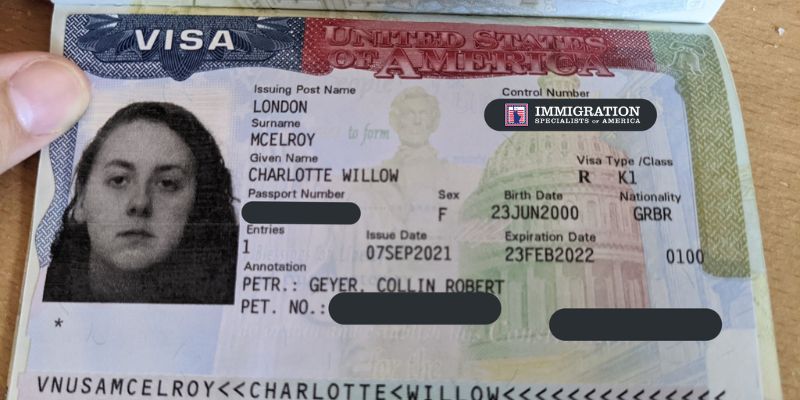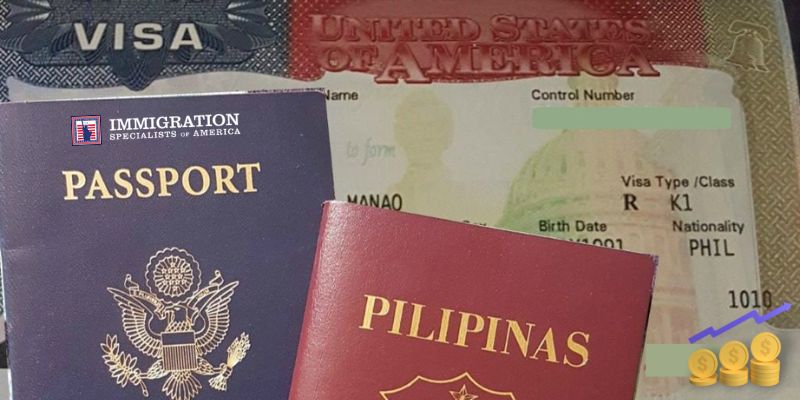The applicants for a K-1 visa must show that they will only depend on the government for public benefits after the US consulate or embassy can grant it. This means the applicant must be able to pay for the trip and stay in the country. The applicant must meet these and other requirements.
What is a k-1 visa?

A foreign national who wishes to visit the United States and marry his or her American fiancée or fiancé may do so with a K-1 visa, a nonimmigrant category. The American citizen files the fiancé or fiancée application on behalf of the foreign national.
A US citizen files the application for a K-1 visa on behalf of the foreign national, that is, the fiancé or fiancée, who must meet the sponsorship requirements before a visa can be granted. The validity of the visa, if granted, is 90 days, and it involves the foreign national and the US citizen getting married within that period.
Several requirements must be met to demonstrate your eligibility as the petitioning fiancée or fiancé. Among the requirements is the ability to prove that you earn enough money to support your fiancé or fiancée once they arrive in the United States.
To facilitate the process, the US government may require that the US national petitioner submit an affidavit. Accordingly, the US citizen petitioner must demonstrate that they have sufficient income if the foreign visitor needs to be supported.
The petitioner must also disclose their financial status and sign a supporting affidavit, even if the foreign national has a high-paying job secured in the US. The income requirements for the K-1 visa are not too high.
K-1 visa income requirements
Usually, it is the US citizen who files the petition. They fill out Form I-129F, “Petition for Alien Fiancé.” and must have an income at least 100% of the poverty guidelines. They complete Form I-129F, Petition for Alien Fiancé, and are required to earn at least 100% of the federal poverty level.
The guidelines are updated yearly, and applicants can easily find the requirements online. Other than your job, other sources of income make up your total income. Your aggregate personal income consists of the following:
- Business earnings
- Common dividends
- Either child support or alimony
- Employee benefits and disability
- Monetary gains
- Rental revenue
- Salaries, tips, and wages
- Taxable distributions from IRAs
- Taxable interest
- Taxable pensions and annuities
- Unemployment benefits
As part of the means-testing process, public benefits such as CHIP, TANF, Medicaid, SSI, and food stamps should not be considered income.
Determining the size of your family
Knowing your household size is necessary to see if you meet the income requirements for a K-1 visa. Your family, in general, should be made up of yourself and other dependents.
Add up all of your current dependents as well as the prospective immigrants. You must factor in any children your fiancé may have who will be travelling with you. Put together the following as necessary to determine the size of your household:
- Any dependents listed on your tax return
- Any immigrants that you’ve previously sponsored
- Your fiancé or fiancée, and any kids who will accompany you
- Yourself
You can then refer to the appropriate table in the HHS poverty guidelines after determining the total size of your household. Your earnings must equal or be higher than the sum shown in the table you will find in the guideline.
Be informed that the tables for places like Hawaii and Alaska are different because of the high cost of living. Using the table appropriate for the state where you currently reside or plan to reside would be best.
Demonstrating that you meet the income requirement
If USCIS approves Form I-129F, the petitioner may be asked to provide more documents to the National Visa Center on behalf of the foreign fiancée and to submit the Declaration of Financial Support, Form I-134.
Use Form I-134 to back up a visa applicant and demonstrate that they will have enough money to cover their expenses while in the US. In essence, it is a guarantee to the US government that the supporter will get involved if the beneficiary of the K-1 visa ever needs public assistance.
Also, the Affidavit of Support, Form I-864, differs from Form I-134. Form I-864, Affidavit of Support, must be submitted by the US citizen when the foreign national adjusts their status to permanent residence.
You can demonstrate that you meet the income requirements by submitting a recent copy of your federal income tax return. However, if your income needs to be reported on your income tax return, there are various other ways to show that you have enough money.
Green card income requirements

The visa holder may adjust their status to apply for a green card after getting married. The public charge rule generally applies to applicants for green cards who do so on the grounds of a K-1 entry.
Using a set of criteria, USCIS will decide whether the applicant is likely to end up as a public charge eventually. As part of the process, USCIS evaluates the applicant’s employment history, skills, and other resources. The household’s overall income is also taken into consideration.
Conclusion
The requirements of a K-1 visa are relatively straightforward, provided the proper steps are followed. Once the appropriate action is followed, and all necessary documents are submitted, the visa can be granted if all other requirements are met.

